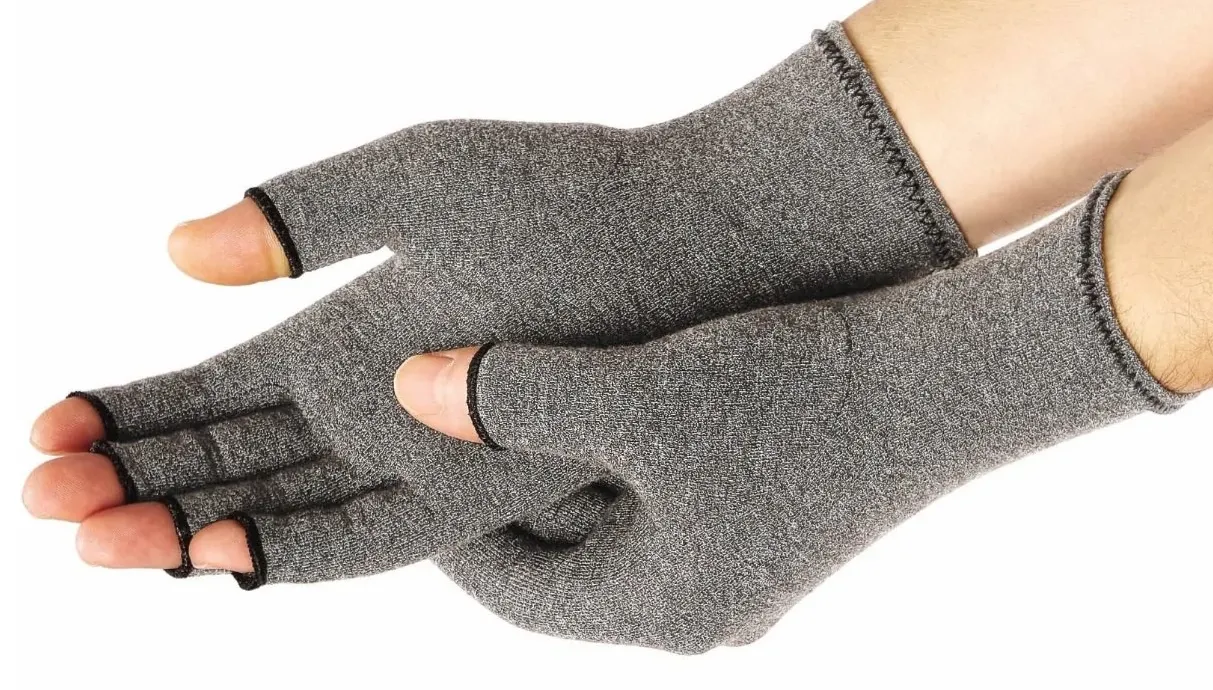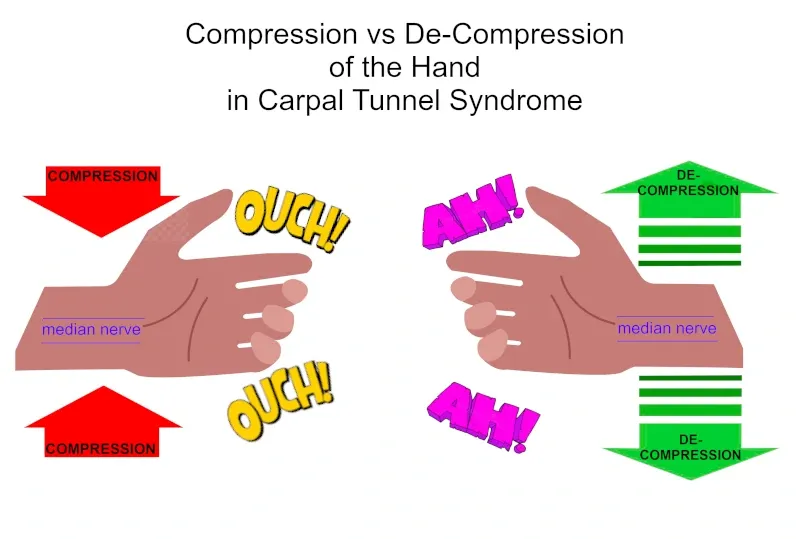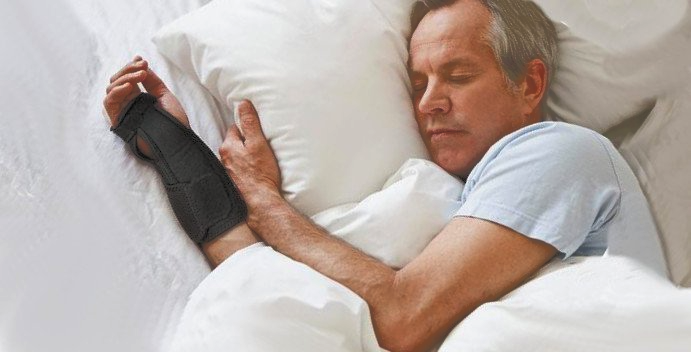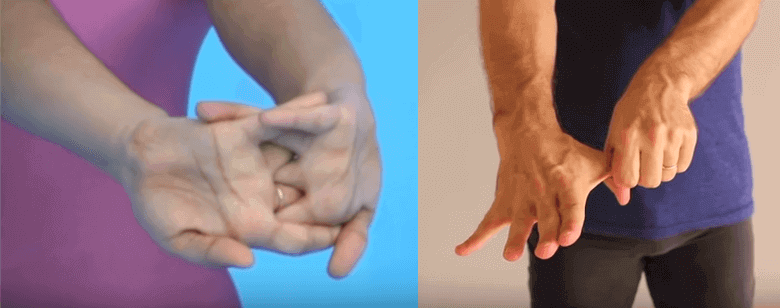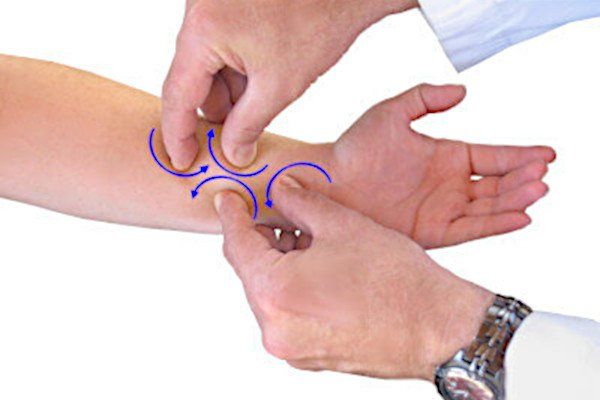Compression Gloves for Carpal Tunnel
From Dr. Z - Carpal tunnel syndrome specialist
Warning about Compression Gloves for Carpal Tunnel: they can be Harmful!
Many people who suffer with hand pain try wearing compression gloves for carpal tunnel syndrome with hopes of relieving their symptoms. Usually, they feel fine for a day or two after wearing the gloves. But that's due only to the placebo effect.
After that, the compression gloves begin making the symptoms even more intense. Pain, numbness, tingling, burning, and shooting electric shocks worsen, Their hand also feels weaker and clumsier. So what's going on?
It's simple. Carpal tunnel syndrome is caused by compression of the median nerve (deep inside your wrist). So exerting even more compression on the hand and wrist crushes the median nerve further. This worsens the condition.
In fact, looking beyond all the hype in magazines and on TV, there's no actual scientific evidence that compression gloves do anything for hand pain whatsoever. Read below to learn more about this problem, including:
- Which compression gloves are particularly harmful?
- What can be done to
permanently
eliminate
carpal tunnel?
What compression gloves do
Compression gloves do exactly what they're named for. They're made to exert pressure on the skin around the fingers, hand, and wrist. The gloves can exert a little or a lot of pressure, depending on the manufacturer.
It's important to distinguish treating other body parts with compression compared to treating carpal tunnel syndrome.
In other words, certain types of "compression apparel" (particularly socks, anklets, and shorts) actually CAN relieve pain temporarily. That's because the compression "diverts" swelling from the affected area, like the foot. Since swelling causes pain, then the compression apparel is a good way to manage the swelling and pain.
For instance, wearing compression gloves to relieve rheumatoid arthritis symptoms is beneficial. In fact, most doctors encourage arthritis patients to wear compression gloves to relieve joint pain and stiffness due to rheumatoid arthritis.
But that same principle doesn't work for carpal tunnel syndrome.
Carpal tunnel syndrome is caused by inflamed flexor tendons. As they inflame and swell, they push on the medina nerve and compress it. You simply cannot "divert" that swelling like you do with arthritis.
Therefore, adding any more pressure to the hand will just exert more pressure on the median nerve. That's when symptoms worsen.
In contrast, de-compressing the hand relieves pressure on the median nerve. And that's how carpal tunnel symptoms resolve.
When you wear compression gloves for carpal tunnel syndrome, symptoms worsen. These symptoms include hand or finger:
Bottom Line: Any added compression on the hand or wrist is harmful if you have carpal tunnel syndrome.
Specific compression gloves & false advertising
Be especially wary of these compression gloves
The following is a list of compression gloves which exert particularly extreme pressure on the wrist and hand. So while they might help rheumatoid arthritis, they are harmful if you have carpal tunnel syndrome:
- Copper Fit
- Imak
- Kapmore
- Mediven
- Ironclad
- Vive
- Dr. Frederick’s
- Comfy Brace
False advertising with compression gloves
So why do these compression gloves actually say "effective for carpal tunnel syndrome"?
In short, it's a ploy to get you to buy them. (Sadly, the $60 billion pain market entices fraud from all industries.) It's false advertising in the most basic sense. And it's harmful to the unsuspecting consumer.
Such false advertising is illegal in the USA. And it got Tommy Copper products into deep trouble. They claimed their products were effective devices for pain relief.
They're not. And they lied to the public about it.
According to the
Federal Trade Commission (FTC), the advertising was a scam. As a result, in 2015
Tommy Copper had to settle a
$1.35 million lawsuit with the FTC for fraudulent advertising.
So what's the best treatment for carpal tunnel?
Treating carpal tunnel syndrome is not a simple matter. That's especially true if you have severe symptoms.
Almost everyone knows that surgery isn't the best solution for treating carpal tunnel. That's because carpal tunnel release surgery fails over 50% of the time. And the more severe your symptoms, the less effective surgery will be.
Here's the god news... Can you dedicate yourself to a daily routine for 4 weeks?
If so, you WILL eliminate symptoms. That's true for even severe carpal tunnel syndrome.
So forget about useless and harmful compression gloves for carpal tunnel syndrome. Instead, focus on B.R.E.M. therapy. It stands for Brace, Rest, Exercise, and Massage.
- This therapy is proven by doctor and therapist to be the
only regimen that can eliminate carpal tunnel symptoms permanently.
- The American Academy of Orthopedic Surgeons (who regulate hand surgery in the USA) recommend using this therapy as a first line of defense.
B.R.E.M. therapy to relieve carpal tunnel syndrome
Brace your hand & wrist
Don't brace with compression gloves. Use a proper "certified" carpal tunnel brace. These are braces designed specifically for carpal tunnel syndrome, and not other disorders like arthritis or sprains.
Also, only brace at night while you're asleep. This keeps you from unconsciously over-bending your wrist, which is harmful if you have carpal tunnel syndrome.
And never wear a wrist brace during the daytime (when you hands are working). If you have carpal tunnel syndrome, you just end up subconsciously fighting the brace while also doing your manual work. This doubly-stresses your hand.
Finally,
never wear a brace with a
palmar spine (a metal spine on the palm side of the brace). This causes even more compression on the interior of your wrist joint. And that further worsens your carpal tunnel syndrome.
Rest your hand & wrist
Resting your hand doesn't mean to stop using your hand. It means curtailing the strenuous activity that caused the problem to begin with. This can be done using the following techniques:
- Take short "mini-breaks" while working. For every hour you work, stop what you're doing and shake out your hands for a few seconds. It's best to also do one minute of finger and hand stretches during this time. (See the next section, "Exercise your fingers & hand").
- Try doing the task that 's stressing your hand another way. Shift hand position, change hands, or apply leverage in a different way.
- Protect you hands from harmful activity. For example, wear padded gloves when working with vibrating equipment or working in the cold.
Exercise your fingers & hand
Carpal tunnel stretching exercises are a powerful carpal tunnel fighter. I always tell patients that if they routinely perform one minute of stretching exercises every hour - for one month - their symptoms will disappear for good.
The best carpal tunnel stretches focus on the flexor tendons of the forearm, wrist, hand, and fingers. Stretching these tendons will make them more supple and limber. That means they're less prone to inflammation and swelling during strenuous hand activity.
Massage your wrist area
Perhaps the most powerful carpal tunnel remedy is to routinely massage the wrist tendons for a few weeks. Just like with stretching exercises, a proper massage keeps the flexor tendons limber and supple.
In particular, the massage called myofascial release is the most potent. Not only does it loosen tendons, it also breaks up any adhesions and restriction around them which inhibit their function. Physical therapists successfully use this technique routinely on carpal tunnel patients.
While myofascial release massage is highly effective, there is one downside. You need to have massage at least once a day (twice daily is best) and for a period of at least 4 weeks.
Summary
Getting relief from carpal tunnel symptoms isn't a simple or easy fix. Many people believe just slapping on compression gloves for carpal tunnel will cure the problem. But they're very wrong. Not only do compression gloves NOT work for carpal tunnel, they actually can case more harm. That's because compression of the median nerve (deep inside the wrist) is the root cause of the disorder. So adding even more compression with gloves makes the condition worse. But there is a solution. If you dedicate yourself to a routine of 4 key therapies, symptoms will be gone forever. These therapies are hand rest, night bracing, stretching exercises, and myofascial release massage.


